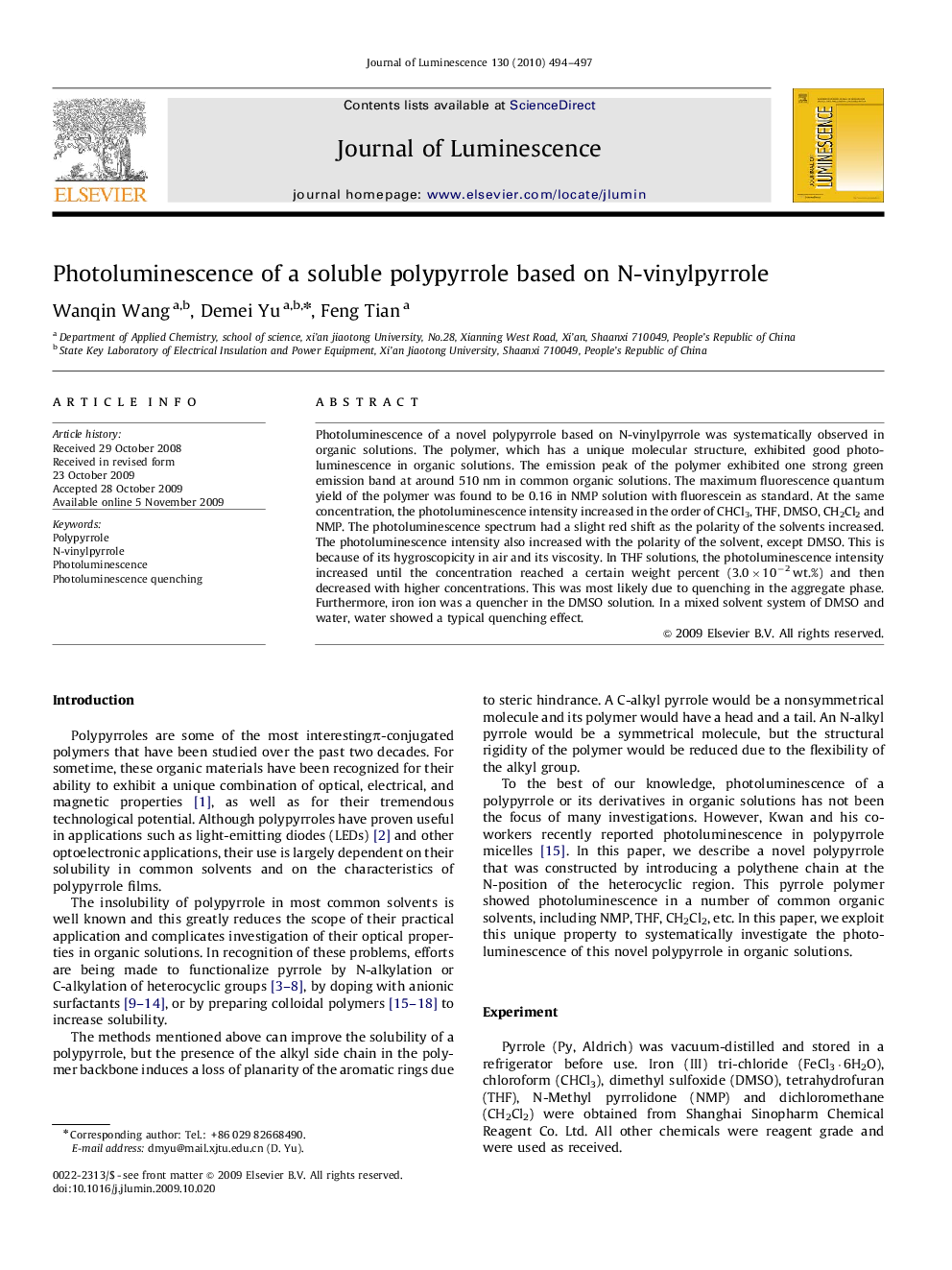| Article ID | Journal | Published Year | Pages | File Type |
|---|---|---|---|---|
| 5402821 | Journal of Luminescence | 2010 | 4 Pages |
Abstract
Photoluminescence of a novel polypyrrole based on N-vinylpyrrole was systematically observed in organic solutions. The polymer, which has a unique molecular structure, exhibited good photoluminescence in organic solutions. The emission peak of the polymer exhibited one strong green emission band at around 510Â nm in common organic solutions. The maximum fluorescence quantum yield of the polymer was found to be 0.16 in NMP solution with fluorescein as standard. At the same concentration, the photoluminescence intensity increased in the order of CHCl3, THF, DMSO, CH2Cl2 and NMP. The photoluminescence spectrum had a slight red shift as the polarity of the solvents increased. The photoluminescence intensity also increased with the polarity of the solvent, except DMSO. This is because of its hygroscopicity in air and its viscosity. In THF solutions, the photoluminescence intensity increased until the concentration reached a certain weight percent (3.0Ã10â2Â wt.%) and then decreased with higher concentrations. This was most likely due to quenching in the aggregate phase. Furthermore, iron ion was a quencher in the DMSO solution. In a mixed solvent system of DMSO and water, water showed a typical quenching effect.
Related Topics
Physical Sciences and Engineering
Chemistry
Physical and Theoretical Chemistry
Authors
Wanqin Wang, Demei Yu, Feng Tian,
